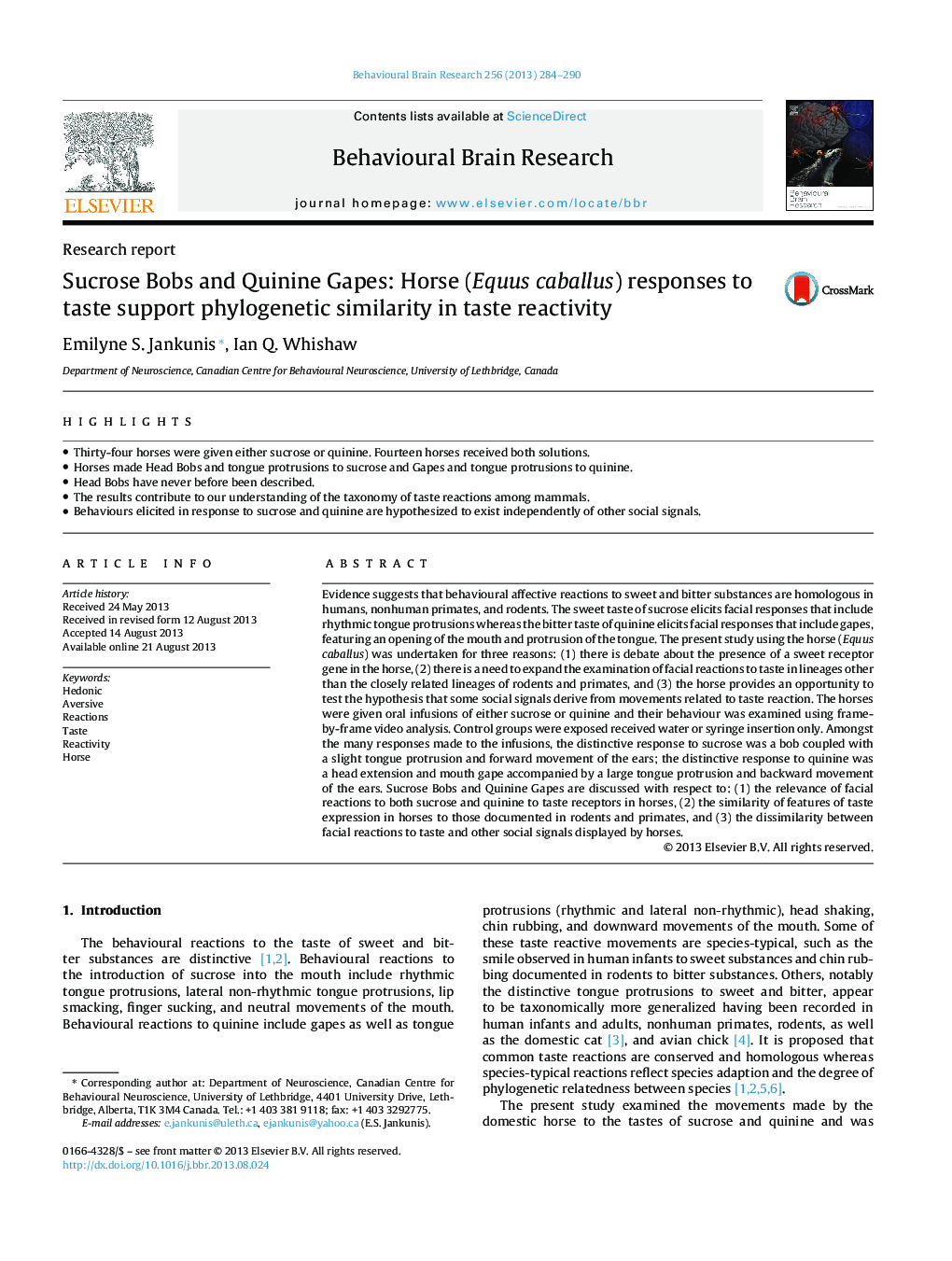| Article ID | Journal | Published Year | Pages | File Type |
|---|---|---|---|---|
| 6258803 | Behavioural Brain Research | 2013 | 7 Pages |
â¢Thirty-four horses were given either sucrose or quinine. Fourteen horses received both solutions.â¢Horses made Head Bobs and tongue protrusions to sucrose and Gapes and tongue protrusions to quinine.â¢Head Bobs have never before been described.â¢The results contribute to our understanding of the taxonomy of taste reactions among mammals.â¢Behaviours elicited in response to sucrose and quinine are hypothesized to exist independently of other social signals.
Evidence suggests that behavioural affective reactions to sweet and bitter substances are homologous in humans, nonhuman primates, and rodents. The sweet taste of sucrose elicits facial responses that include rhythmic tongue protrusions whereas the bitter taste of quinine elicits facial responses that include gapes, featuring an opening of the mouth and protrusion of the tongue. The present study using the horse (Equus caballus) was undertaken for three reasons: (1) there is debate about the presence of a sweet receptor gene in the horse, (2) there is a need to expand the examination of facial reactions to taste in lineages other than the closely related lineages of rodents and primates, and (3) the horse provides an opportunity to test the hypothesis that some social signals derive from movements related to taste reaction. The horses were given oral infusions of either sucrose or quinine and their behaviour was examined using frame-by-frame video analysis. Control groups were exposed received water or syringe insertion only. Amongst the many responses made to the infusions, the distinctive response to sucrose was a bob coupled with a slight tongue protrusion and forward movement of the ears; the distinctive response to quinine was a head extension and mouth gape accompanied by a large tongue protrusion and backward movement of the ears. Sucrose Bobs and Quinine Gapes are discussed with respect to: (1) the relevance of facial reactions to both sucrose and quinine to taste receptors in horses, (2) the similarity of features of taste expression in horses to those documented in rodents and primates, and (3) the dissimilarity between facial reactions to taste and other social signals displayed by horses.
